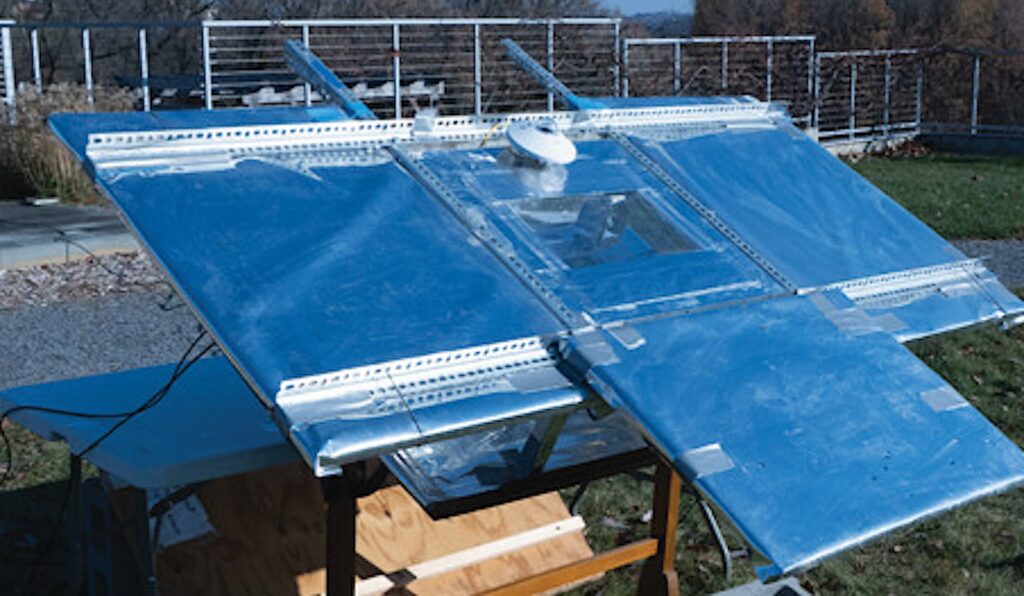Photo courtesy of Pennsylvania State University
Researchers at Pennsylvania State University have developed a way to harness solar energy and the extremely cold temperatures of space to generate both renewable energy and cooling capacity, Tech Xplore reports.
The researchers’ findings were published in the scientific journal Cell Reports Physical Science under the title “Simultaneous daytime radiative cooling and solar power generation from the same region.”
The method pioneered by researchers at Penn State University not only collects solar energy with solar cells (as usual), but also redirects heat away from Earth using a process called “radiative cooling,” which sends infrared light instantly and directly into space (which the researchers call “cold space”) without warming the surrounding air.
As the scientists explained, combining solar collection and radiative cooling creates a method that is more than the sum of its parts, working together to produce both electricity and cooling power for things like refrigerators and air conditioners.
“Based on these experimental results, the combination of these two power generating devices has the potential to significantly outperform bare solar cells, which are key renewable energy technologies,” said Lingxiao Zhu, assistant professor of mechanical engineering and leader of the study.
“Radiative coolers act as a natural air conditioner, 24/7, both at night and during the day,” explains Pramit Ghosh, a doctoral student in mechanical engineering at Penn State and lead author of the study. “Even on a hot day, a radiative cooler is cool to the touch. … At the same time, in the same place, we can take advantage of these renewable resources 24 hours a day.”
Sign up for our newsletter and get the best news, eco-friendly hacks, and the latest in cool clean tech delivered straight to your inbox every week.
Creating more sustainable ways to generate cooling capacity is crucial to a clean energy future. Air conditioners alone are expected to produce over 110 million tons of air pollutants in some parts of the world between now and 2050. As the planet continues to overheat, air conditioner usage will continue to rise.
Telling people to turn off their air conditioner and endure the heat isn’t particularly rational or practical (although some governments have done so), so it’s important that we continue to develop and invest in new, more efficient and sustainable versions of this technology. And a new technology from researchers at Pennsylvania State University looks to do just that.
Sign up for our free newsletter for weekly updates on the most amazing innovations that improve our lives and save the planet.

